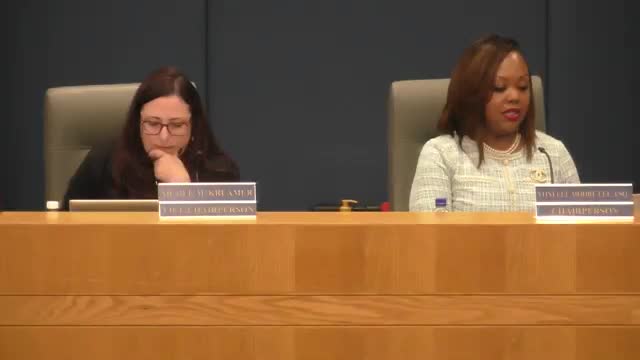Education Board Debates Controversial 50 Percent Grading Policy
September 23, 2024 | Charles County Public Schools, School Boards, Maryland
This article was created by AI summarizing key points discussed. AI makes mistakes, so for full details and context, please refer to the video of the full meeting. Please report any errors so we can fix them. Report an error »

In a recent government meeting, significant discussions centered around the implementation of a new grading policy that establishes a minimum grade of 50% for assignments, provided students demonstrate a \"good faith effort.\" This policy aims to ensure that students who attempt their work are not penalized with failing grades that could hinder their academic progress.
Concerns were raised regarding the clarity of the policy, particularly how \"good faith effort\" would be defined and assessed by educators. Board members expressed apprehension that subjective interpretations of this term could lead to inconsistencies in grading practices across different classrooms. The discussion highlighted the need for clear guidelines to help teachers uniformly evaluate student efforts.
Another point of contention was the handling of late submissions. The policy stipulates that if an assignment is submitted late but demonstrates effort, the lowest grade a student can receive is 50%. However, if no effort is shown, a grade of zero would be recorded. This raised questions about how grades would be communicated to parents and whether actual scores would be visible alongside the adjusted grades.
Board members emphasized the importance of maintaining high academic standards and preparing students for real-world expectations. Some argued that the policy could inadvertently lower motivation among students, as receiving a 50% for minimal effort might not reflect the rigor of future academic or professional environments.
The meeting concluded with a consensus on the necessity of further clarifying the policy's intent and operational details. Board members agreed that a superintendent rule would be developed to provide additional guidance, ensuring that the grading system remains fair and equitable while supporting student learning.
Concerns were raised regarding the clarity of the policy, particularly how \"good faith effort\" would be defined and assessed by educators. Board members expressed apprehension that subjective interpretations of this term could lead to inconsistencies in grading practices across different classrooms. The discussion highlighted the need for clear guidelines to help teachers uniformly evaluate student efforts.
Another point of contention was the handling of late submissions. The policy stipulates that if an assignment is submitted late but demonstrates effort, the lowest grade a student can receive is 50%. However, if no effort is shown, a grade of zero would be recorded. This raised questions about how grades would be communicated to parents and whether actual scores would be visible alongside the adjusted grades.
Board members emphasized the importance of maintaining high academic standards and preparing students for real-world expectations. Some argued that the policy could inadvertently lower motivation among students, as receiving a 50% for minimal effort might not reflect the rigor of future academic or professional environments.
The meeting concluded with a consensus on the necessity of further clarifying the policy's intent and operational details. Board members agreed that a superintendent rule would be developed to provide additional guidance, ensuring that the grading system remains fair and equitable while supporting student learning.
View full meeting
This article is based on a recent meeting—watch the full video and explore the complete transcript for deeper insights into the discussion.
View full meeting
